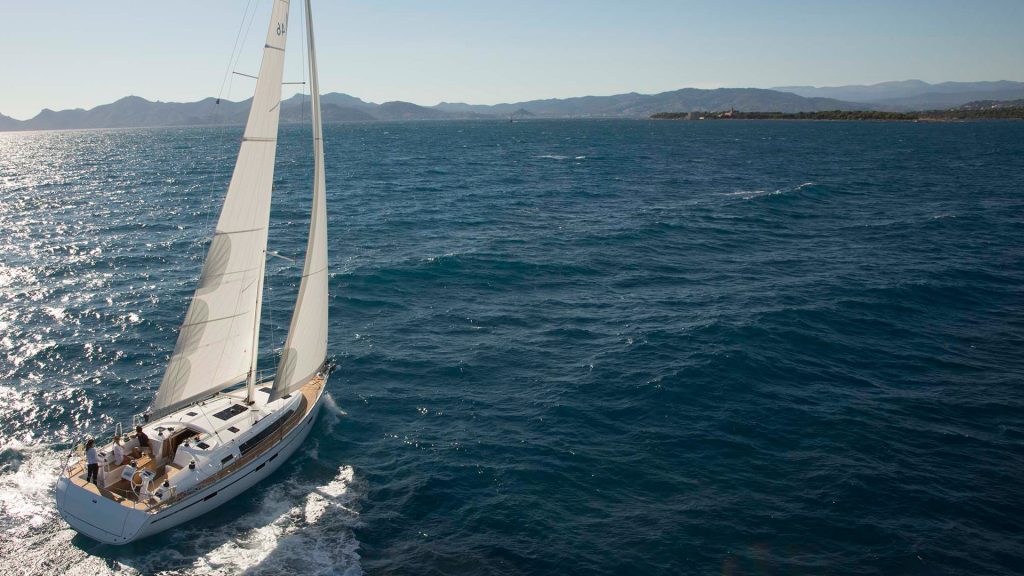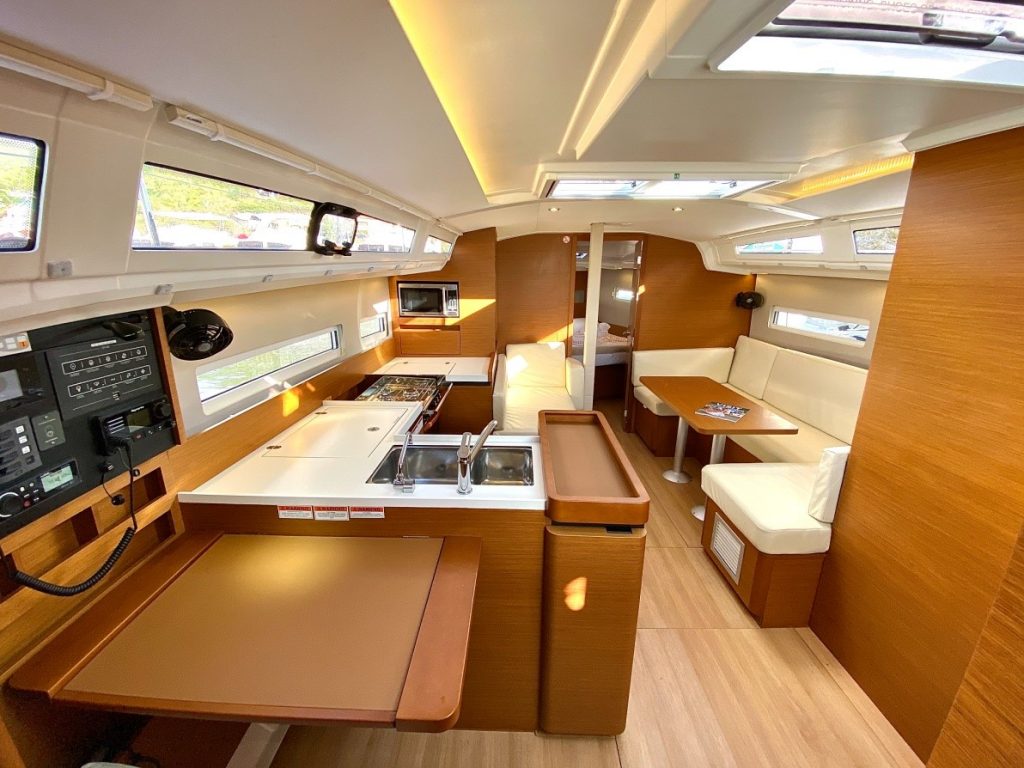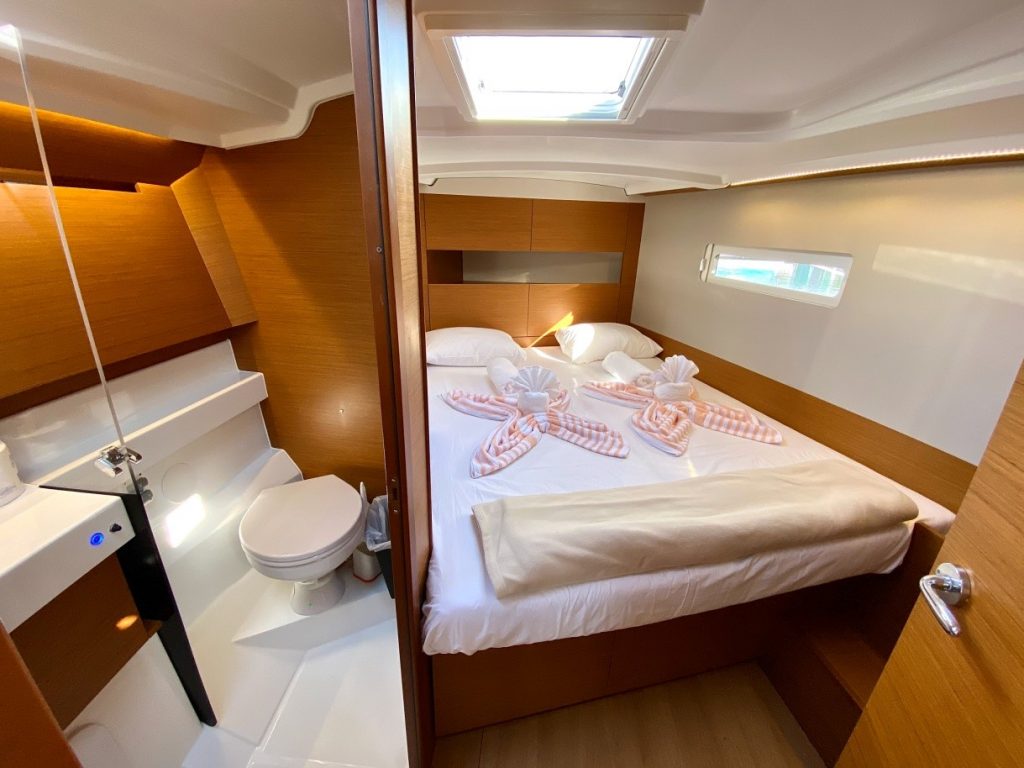Horizon Yacht Sales - Marvellous Monohulls – Why do so many people own and sail a monohull?
As the saying goes from Wind in The Willows “There’s nothing – absolutely nothing – half so much worth doing as messing about in boats” and in this piece, the second in our blog series, I’m looking at why this is so true of monohulls.
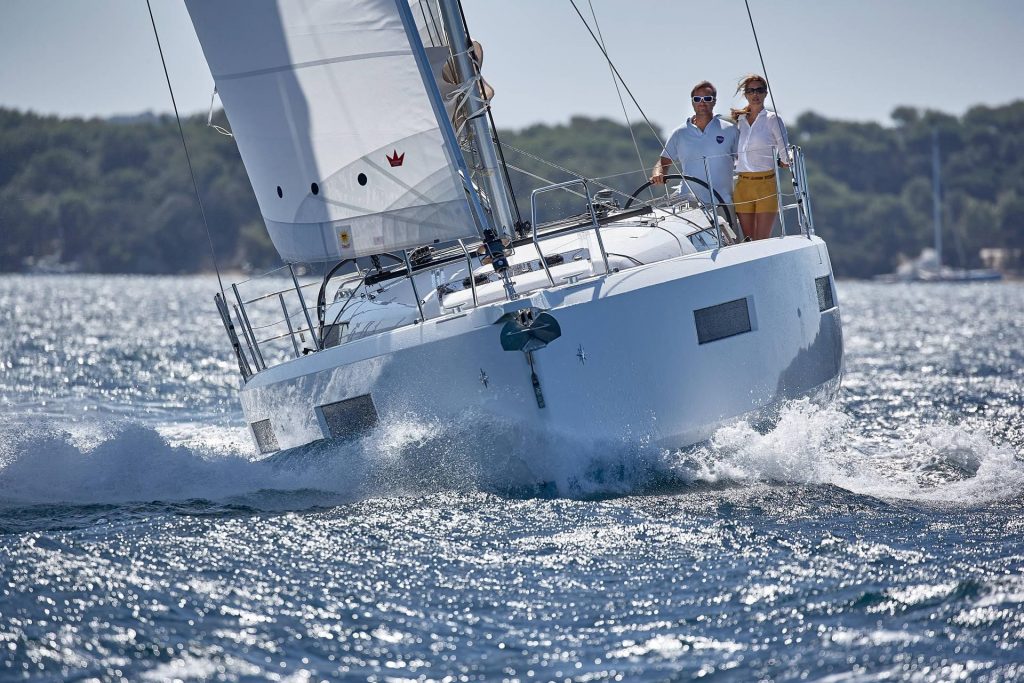
It is a fact that in recent years catamarans have become increasingly popular in the Caribbean charter market. There are definitely some great designs from the likes of Lagoon, Nautitech and Fountaine Pajot and cats have many positives: they are stable, spacious, (fairly) quick, flat, sociable, comfortable at anchor and easy to sail.
But, despite these obvious attractions, there are many people who simply prefer one hull. I have seen and sailed, many fantastic sailing yachts and the Marvellous monohull, in my opinion, delivers the absolutely perfect sailing experience.
Let’s find out why.
There is so much that attracts me to a monohull and I’ll start with romance; not something you’d expect to be first on my list, but it is!
Whenever someone dreams of running away to sea or simply standing with a cocktail on the deck watching the sunset, I’ll wager that it’s a single-hulled yacht in those dreams.
There is a great sense of seafaring tradition and romantic history that sailing a monohull encapsulates; it’s a feeling that gets you right in your core.
Older yachts deliver this in style. Take the Classic yachts like the Herreshoff designed Elena or a J-class like Velsheda, or even the smaller Folkboat, Solent Sunbeam or the Meter boats. There is purity in their sailing and to me; they capture the full romance of the sea.
My second point is that monohulls simply look good. In fact, in many cases beautiful. Have you ever seen such a gorgeous yacht as the 1936 William Fife designed Latifa, pictured here at Antigua Classic Regatta? The late great naval architect Uffa Fox seems to agree.
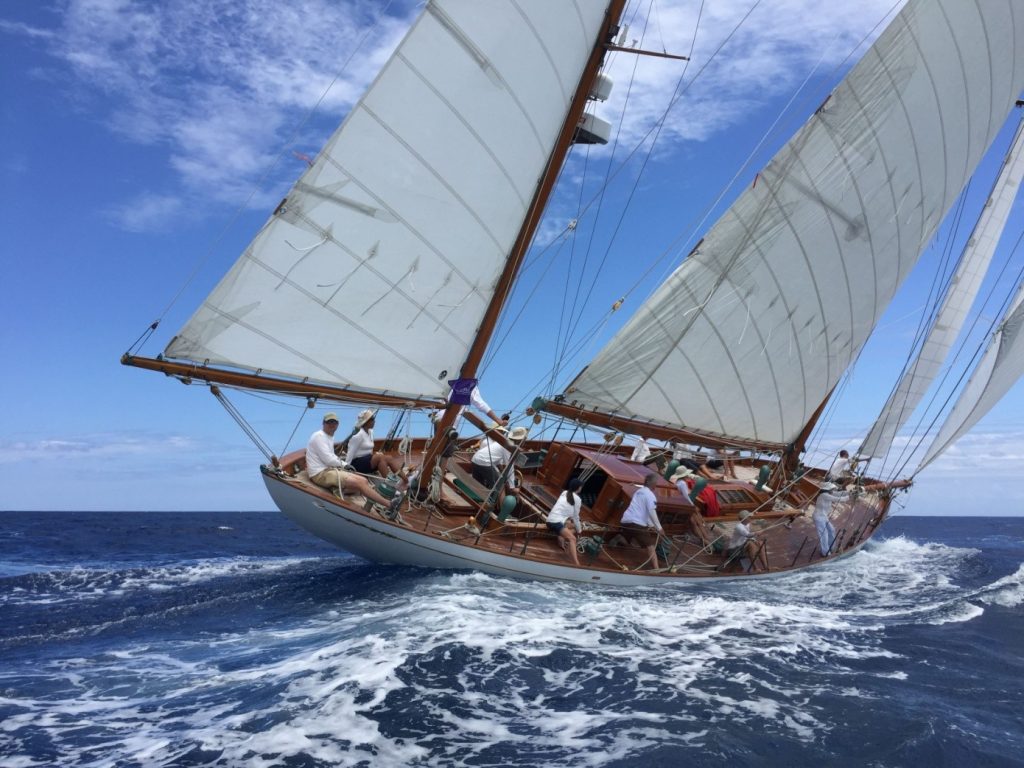
It’s not only Classic yachts that look fantastic, modern super-yachts like the amazing three-masted Maltese Falcon and the Philippe Briand designed 67m Vertigo look stunning too. Racing machines like Wild Oats and Comanche, and round-the-world boats like Hugo Boss, all have a certain beauty as well.
Dare I say it, coming back to the “real” world; today’s production monohulls look good too. Beneteau, Bavaria and Jeanneau are manufacturers’ with some very pretty boats.
For us “ordinary sailors” this is a great attraction, the sleek lines, the elegant hull design and powerful sail plans all add up to make modern-day yachts simply look great. Who doesn’t want to look good while sailing?

I have particularly warmed to the new Jeanneau Sun Odyssey range designed by Philippe Briand and Marc Lombard. There is definitely some super-yacht pedigree evident in these yachts. They have a clean look, innovative walk-around decks and a full-length chine along the hull. Being some of the most evolutionary designs in recent times, it is no wonder that these performance cruisers are proving so popular.
People say “real sailors” sail monohulls and the only way to get “true sailing” is on a yacht. I am not sure I agree 100% with this and I’m sure some legendary multihull sailors like Loick Peyron or Franck Cammas would have a comment or two.
But, if you’ve ever sailed a monohull you’ll know that feeling when the wind increases, the sails fill and that natural power transfers to the hull, she heels, the water approaches the leeward rail, the hull picks up and surges forward. It is unlike anything else and it’s just another aspect of a monohull that gets sailors excited.

However, there’s more to single-hull sailing than looks and that feel-good feeling; there are many practical reasons why sailing a monohull appeals to so many.
First of all, they are safe. They have a large keel below the waterline that keeps them nicely upright; they are almost impossible to capsize which is a comforting feature. Importantly with today’s modified fin keels, or wing keels, you can achieve a shallower draft with little compromise to sailing performance, allowing access to cruising grounds previously off-limits to deeper draft yachts.
Moreover, they also let you know if you are getting overpowered by simply heeling. Although being exhilarating and possibly a bit wet occasionally, the boat lets you know in good time if action is needed. It’s very different to sailing a cruising cat for example, where the loads can increase significantly with less feedback from the boat. You certainly have to be more self-aware of wind and waves on a cat.
The monohull also comes into its own upwind. The Jeanneau 490 will do 9.2 knots in 18 knots of true wind – pretty impressive for a cruising yacht! As well as being able to get close to the wind she is also “sea friendly”, slicing through the seas and not pounding or slapping as cats are prone to do.
Modern designs are lighter and you’ll feel the effect of a well-trimmed sail immediately. With the right trim, the boat will feel balanced and light on the helm. Get them in the groove in a nice breeze and they’ll track nicely under autopilot. Of course, trim the sails badly and you’ll feel that too!
But is a single-hull really “better” upwind, I hear you ask? Although cats do not point as high, if you drop off a few degrees the speed performance can improve dramatically. So although they will not sail as high and thus sail further to get to the same place, their velocity made good (VMG) may challenge a monohull in the right wind and sea conditions. So, there is potential to arrive at the windward destination around the same time.
That said, in a lighter breeze, the equivalent length cruising monohull will definitely have the advantage over the cruising cat.
Off the wind, the performance is there too. The vang holds the boom down giving the leech better shape, (no uncontrolled twist). Combine that with less swept back shrouds than you see on a cat, means you can square off the main more, keep power and sail deeper.
Monohulls also respond quickly to changes in the helm and will tack swiftly. This is especially true of modern yachts with a larger single rudder or twin rudders and fin or winged keels. It does mean you need to have the crew prepped and ready, but it makes tacking and gybing easy manoeuvers especially with self-tacking jibs that are available on many yachts.
I agree that a Cat at anchor offers a great living area and stable platform. But modern monohulls have adapted well in this area. Cockpits have got bigger, become more versatile and more comfortable. The beam is often carried well aft, particularly on the latest European production models, so cockpits are wider, and the huge drop-down swim platform extends the relaxation area at anchor.
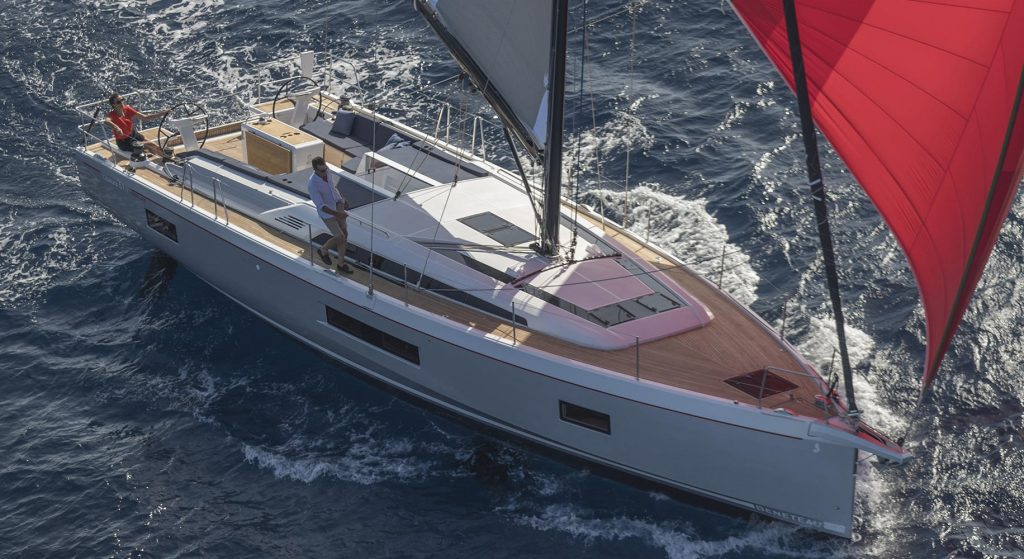
Helm stations are more ergonomically designed and features offered include twin wheels, improved instrumentation panels, offset cockpit tables allowing a clear walkthrough to the companionway, coamings that convert into daybeds and much more.
One manufacturer is offering a model with the galley on deck!
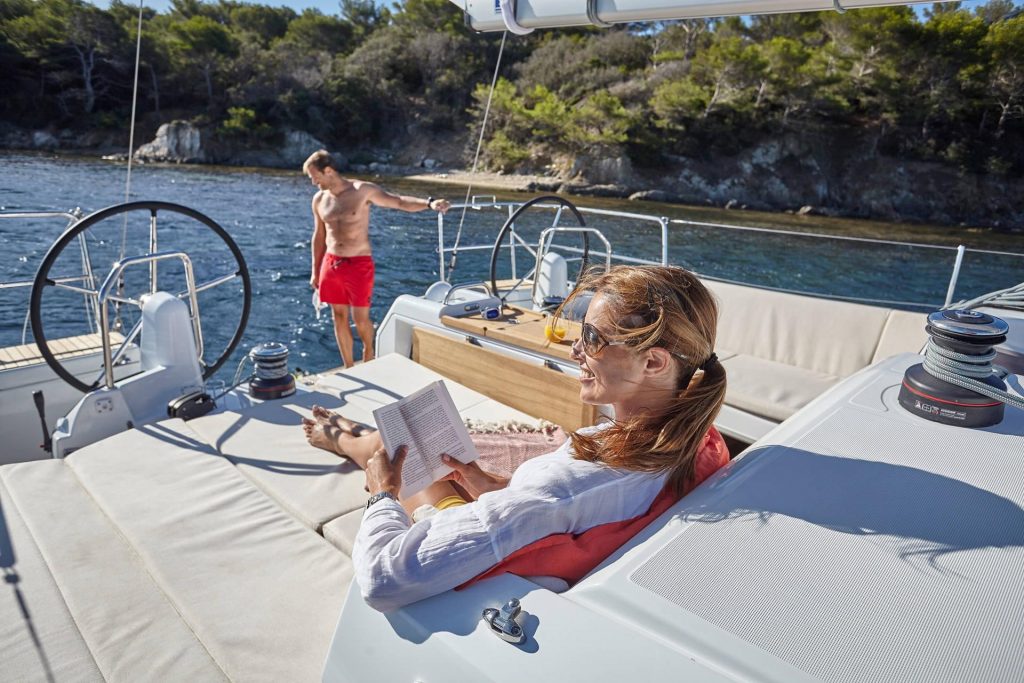
With a deeper keel on your monohull and less windage, you hardly swing at a mooring or in an anchorage. If you go into a Marina overnight you’ll also have sensible berthing fees, paying for just the one hull and not two!
Life aboard is also much more comfortable than it was a few years ago. Interiors of modern boats have improved in leaps and bounds. Smaller 35-40 footers have well over 6 feet of headroom and these boats now feel like a much bigger boat below. More attention has been given to improving light and airflow with larger opening ports and more hatches.
There are often options for full-size double berths, full-size appliances and plenty of storage and living space below. Historical features remain, like the chart table but modern materials and larger hull windows create the feel of light and space.
The Jeanneau 410 by Marc Lombard: the salon and the forward berth and head
And if that isn’t enough then maybe the price tag will help. A 42-foot cruising monohull base price is around $200K and the equivalent cat base price is closer to $400K. Moreover, regular maintenance will also be lower than on the cat. There is one engine, not two, and with smaller internal volume less AC units and smaller generators, all helping to keep costs in check.
So why do some people prefer a monohull? Romance, tradition, history, performance, comfort, versatility, great sailing, good looks and an attractive price. Monohull sailing….Bring it on!
Alastair Ashford is a racer-sailor living in Antigua, and owns a small classic yacht.

